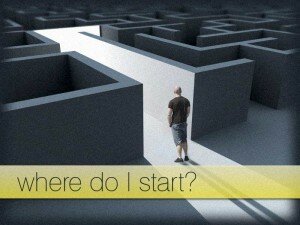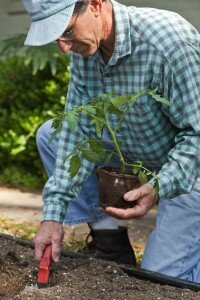Planning a volunteer project for a group of people can be difficult. There are a lot of things to consider; from what the project should accomplish to how to ensure the project has a lasting impact. Here are some quick tips for planning successful group project:
 1. Define Your Goals
1. Define Your Goals
Develop a set of expected outcomes for your volunteer project. These form the base of your planning. For example, if your goal is to help improve youth literacy in a local school, your plan is going to develop differently than if your goal is to help your community plan and prepare for a disaster.
2. Create a Project Team
Gather together a group of people to help get the project off to a good start. Inclusive projects start at the planning stage, so create a team that is made up of people with a wide range of abilities and experience.
3. Select a Project
Good group project ideas match real community needs with the skill level of volunteers. With a little bit of forethought, you can find a partner organization and project that could not be done without the added energy and dedication of volunteers.
 4. Plan the Project
4. Plan the Project
The planning process can help bring members of your project team together and create a sense of ownership of the project. Be sure to think about who will handle what tasks and the logistics involved in executing the project and getting volunteers to the project site.
5. Recruit Volunteers.
Volunteers help people change their lives and transform communities. Group projects give citizens a special opportunity to demonstrate caring and sharing, and encourage more people to give their time and skills to the issues of their choice.
6. Resource Development
What resources are in place to support the project, and what will you have to get to support your project? What type of equipment is needed to support the project? Will it need to be purchased or can you partner with an organization that already has equipment that you need? Don’t forget to think about what will be needed after the project day - thank you notes and follow ups with your project volunteers.
 7. Engage the Media
7. Engage the Media
Get the word out. Group projects can make a big difference in your community and can be a powerful signal for positive change. The good news is that publicity for your project is often free. Making an investment of time in publicity and working with the media can help to spread the word that volunteering helps solve serious social problems and helps to build communities.
8. Implementing the Big Day
The key to success on the project day is good management and planning. The more that people know about what is going on, the more likely it is that things will go well. Make sure that the project organizers and leaders are easily identifiable and have some way to communicate with each other.
9. Sustaining Service
Just because the project is complete, doesn’t mean that it’s all over. You may find that you and your team want to continue planning projects in the community. Take some time to reflect on what you’ve learned through the process and start planning another project. If the team doesn’t want to plan another project, encourage everyone to continue volunteering as individuals to help support the work that was accomplished on your project day.
SUPER BONUS TIP
Don’t forget to have fun. Planning a group volunteer project is a lot of work, but there’s a lot of opportunities in the process to make it a great experience for everyone that’s involved from the project planning team to community partners to the volunteers.

 Do you want to create an impact in your community? Do you see a need that isn’t being met and want to act to fix it? Do you want to inspire and move people to act with you?
Do you want to create an impact in your community? Do you see a need that isn’t being met and want to act to fix it? Do you want to inspire and move people to act with you? Brainstorming
Brainstorming What makes people volunteer? This question often runs across the minds of nonprofit organizations when trying to recruit volunteers for service projects. It is important to understand these motivating factors to recruit more dedicated volunteers to your cause. When individuals have a strong tie to your organization, they are more likely to return for service again. They feel that their needs and feelings are being respected when they are included in project planning.
What makes people volunteer? This question often runs across the minds of nonprofit organizations when trying to recruit volunteers for service projects. It is important to understand these motivating factors to recruit more dedicated volunteers to your cause. When individuals have a strong tie to your organization, they are more likely to return for service again. They feel that their needs and feelings are being respected when they are included in project planning. otherwise. This type of reasoning includes “I can make new contacts that might help my business or career “or “Volunteer work will look good on my resume.” It is important for your organization to include the personal benefits to volunteering, as well as the overall community benefits from volunteer work.
otherwise. This type of reasoning includes “I can make new contacts that might help my business or career “or “Volunteer work will look good on my resume.” It is important for your organization to include the personal benefits to volunteering, as well as the overall community benefits from volunteer work.
 As a volunteer manager, it is important to keep your volunteers up-to-date and in the loop with important information regarding your organization. Communication is also a key step to project management and it should be an essential step in every service project planning steps. What is the best communication strategy for your organization?
As a volunteer manager, it is important to keep your volunteers up-to-date and in the loop with important information regarding your organization. Communication is also a key step to project management and it should be an essential step in every service project planning steps. What is the best communication strategy for your organization? market itself at a low cost, which will help your organization attract a new audience.
market itself at a low cost, which will help your organization attract a new audience.
 is essential to the success of your project. Make sure that you make this step a priority within your organization. As you can see there are many different communication tools that your organization can use that do not cost a great deal of money. It is important for your organization to choose a communication tool that will fit your organization’s style.
is essential to the success of your project. Make sure that you make this step a priority within your organization. As you can see there are many different communication tools that your organization can use that do not cost a great deal of money. It is important for your organization to choose a communication tool that will fit your organization’s style. Establishing goals at the onset of your group project, allows for you to measure the outcomes of your project. Consider these questions: Is there a current event that has emotionally affected you or might have emotionally affected others around you? What change would you like to see in your community?
Establishing goals at the onset of your group project, allows for you to measure the outcomes of your project. Consider these questions: Is there a current event that has emotionally affected you or might have emotionally affected others around you? What change would you like to see in your community? Find volunteers or contact other local nonprofits that can help provide volunteers. If your project is important to the community, you will find many people eager to be involved. Place flyers at your local post office, park, grocery store, school, community bulletin boards. Volunteer recruitment will also help make people aware of your group project. Social media outlets will also help with volunteer recruitment. Websites such as , , , and a personal blog can easily reach a wide range of people.
Find volunteers or contact other local nonprofits that can help provide volunteers. If your project is important to the community, you will find many people eager to be involved. Place flyers at your local post office, park, grocery store, school, community bulletin boards. Volunteer recruitment will also help make people aware of your group project. Social media outlets will also help with volunteer recruitment. Websites such as , , , and a personal blog can easily reach a wide range of people. Remember to thank your volunteers! Thank your volunteers so that they can feel appreciated and want to volunteer for future projects. Whether it’s a hand-written note filled with a simple message and encouraging words or talking to your volunteers individually-thank them! If you’re not quite sure how, we have
Remember to thank your volunteers! Thank your volunteers so that they can feel appreciated and want to volunteer for future projects. Whether it’s a hand-written note filled with a simple message and encouraging words or talking to your volunteers individually-thank them! If you’re not quite sure how, we have  Call an easily accessible town meeting of community members and project team members. Brainstorm challenges facing the community and select one as the top priority.
Call an easily accessible town meeting of community members and project team members. Brainstorm challenges facing the community and select one as the top priority.
 Contact the government or public policy program at a local university or college. Ask students to survey the local residents about their concerns.
Contact the government or public policy program at a local university or college. Ask students to survey the local residents about their concerns.

 Neighboring is an asset- and empowerment-based approach that engages underserved and underresourced community members to find innovative, sustainable solutions to address local challenges. Asset-based refers to the acknowledgment that all members of a community can offer something to improve the community: talents, skills, knowledge, or resources. The resident-led approach primarily focuses on a specific geographic area (i.e., ZIP code, neighborhood, or street) in which the majority of the volunteers, activities, and organization come from within a community.
Neighboring is an asset- and empowerment-based approach that engages underserved and underresourced community members to find innovative, sustainable solutions to address local challenges. Asset-based refers to the acknowledgment that all members of a community can offer something to improve the community: talents, skills, knowledge, or resources. The resident-led approach primarily focuses on a specific geographic area (i.e., ZIP code, neighborhood, or street) in which the majority of the volunteers, activities, and organization come from within a community.


